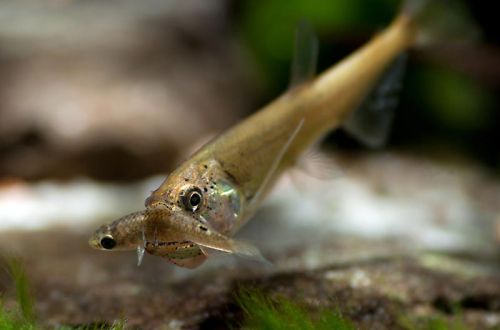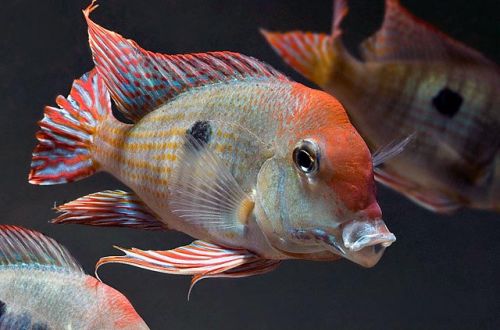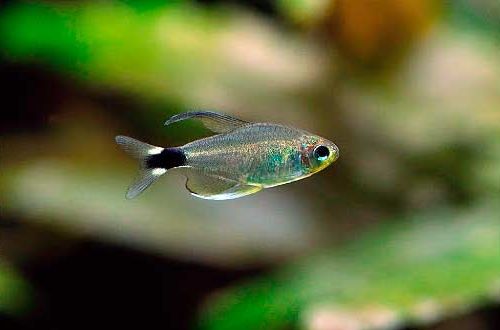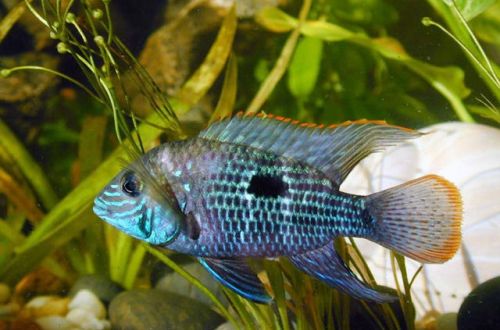
Turquoise Akara
Turquoise Acara, scientific name Andinoacara rivulatus, belongs to the Cichlidae family. Large and beautiful fish, but overly aggressive and require a large aquarium with an efficient filtration system.

Contents
Habitat
Occurs from the territory of the northern part of Peru and the coastal part of western Ecuador (South America). It lives in deltas of rivers flowing into the ocean, streams and rivers flowing along hilly slopes among tropical forests. Occurs close to shore, rarely in open water.
Brief information:
- The volume of the aquarium – from 300 liters.
- Temperature – 20-24°C
- Value pH — 6.5–8.0
- Water hardness – soft to hard (5-25 dGH)
- Substrate type – sandy
- Lighting – subdued
- Brackish water – no
- Water movement – light or moderate
- The size of the fish is 22–30 cm.
- Meals – any
- Temperament – aggressive
- Keeping alone or in a formed male/female pair
Description
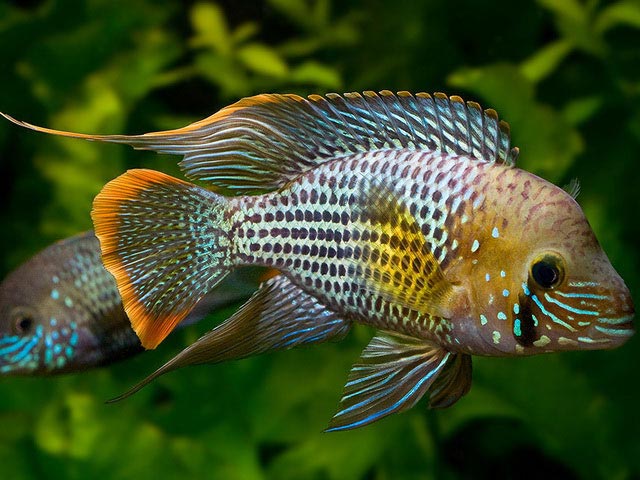
Adult males reach a length of up to 30 cm, have enlarged dorsal and anal fins, as well as a characteristic occipital hump. In nature, such a hump appears only during the mating season, however, in an aquarium, it is constantly present. Females are noticeably smaller and do not have any features. The coloration is turquoise (between blue and green) with black dots on each scale, the pattern continues on the fins. The dorsal and caudal fins have an orange border.
Food
An omnivorous and generally undemanding species. It is advisable to feed specialized food designed for South American cichlids, containing all the necessary trace elements. If possible, you can diversify the diet with live or pieces of frozen food in the form of earthworms, shrimp meat and mussels.
Maintenance and care, arrangement of the aquarium
The minimum volume of the tank for one fish starts from 300 liters. The design uses a sandy substrate, various snags, heaps of stones, artificial vegetation, including floating, for beauty. The lighting is subdued. Turquoise Akara does not favor living plants, they are likely to be pulled out or badly damaged. All decorative elements must be securely fastened so that such a large fish cannot overturn, break, etc.
Hydrochemical indicators have wide allowable pH and dGH values, so there are no difficulties with water treatment. But there may be problems with maintaining high water quality due to the large amount of organic waste (the fish are not small) and the lack of plants that can process some of the pollution. Thus, a productive filtration system is a must along with regular tank cleaning.
Behavior and Compatibility
Aggressive territorial species, attacks not only other fish, but also their relatives. In a small aquarium, only one adult or a well-established male / female pair is possible. In larger tanks over 600 liters, it is possible to combine with large catfish, cichlids, haracins, but in this case, the Turquoise Akara should be alone, otherwise, in the event of a mating season and if there is a partner, other fish will be unhappy.
Breeding / breeding
This species forms a permanent pair, which can persist throughout the life of the fish. On what basis Akara chooses a partner is not known, but not everyone can agree. For example, if a female is added to an adult male, then it is likely that she will be killed, but if the fish grow in a group (6–10 individuals) from a young age, then at least one pair may form by the time of puberty.
Favorable conditions for spawning are achieved in soft slightly acidic water at a temperature not exceeding 24°C. The incentive for the beginning of the mating season is a one-time replacement of a large volume of water (30–50%). for a little cold. The female, before laying eggs, chooses a place – it can be a hole in the ground, a flat stone and other design element. In total, there are up to 400 eggs in a clutch. After fertilization, the female remains in close proximity to the eggs, and the male keeps at a distance guarding the boundaries of his territory from strangers. It is worth noting that at this time he becomes overly belligerent and is able to kill a potential intruder. The incubation period lasts about 3-4 days, after another week the fry begin to swim freely, but prefer to stay close to the female, which continues to protect them. Parental care lasts several weeks.
Fish diseases
The main cause of most diseases is unsuitable living conditions and poor-quality food. If the first symptoms are detected, you should check the water parameters and the presence of high concentrations of hazardous substances (ammonia, nitrites, nitrates, etc.), if necessary, bring the indicators back to normal and only then proceed with treatment. Read more about symptoms and treatments in the Aquarium Fish Diseases section.



